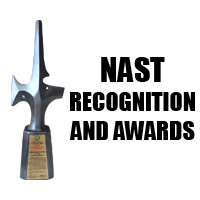The National Academy of Science and Technology, Philippines (NAST PHL), in partnership with the University of the Philippines Manila and Case Western Reserve University of Cleveland, Ohio, through its Health Sciences Division conducted the Roundtable Discussion on Molecular Pathogenesis of Infectious Diseases on February 20, 2015 at Hotel Jen Manila.
The RTD, organized by the Health Sciences Division chaired by Acd. Jaime C. Montoya, along with Dr. Edsel Maurice T. Salvana, NAST Outstanding Young Scientist and Director of the Institute of Molecular Biology and Biotechnology at the National Institutes of Health as thefocal person, aimed to (1) learn about the molecular pathogenesis of infectious diseases and how these mechanisms lead to manifestation of infections; (2) understand the molecular mechanisms of infection in order to determine possible treatment strategies to minimize morbidity and mortality; and (3) understand disease interactions at the molecular level and how these affect pathogenicity and disease outcomes.
Acd. William G. Padolina, president of NAST PHL, welcomed the speakers and participants to the RTD. He hoped that aside from the technical knowledge, the RTD will also serve as a venue for future research collaboration between the three institutions regarding infectious diseases. Acd. Carmencita D. Padilla, chancellor of the University of the Philippines (UP) Manila and member of the NAST Health Sciences Division, emphasized the value in prevention and preparedness in combating infectious diseases. She mentioned that UP Manila and the Philippine General Hospital (PGH) are investing heavily in the prevention and control of communicable diseases. As chancellor, she is also looking forward to having a formal collaboration with Case Western Reserve University. Such a collaboration will greatly help our institutions come up with evidence-based recommendations that can be used in the formulation of health policy in the Philippines.
Invited experts from Case Western Reserve University, Cleveland, Ohio were Dr. Robert Salata, professor and executive vice chair of the Department of Medicine and Chief of the Division of Infectious Diseases and HIV Medicine; Dr. Federico Perez, assistant professor and research faculty of the Department of Medicine; and Dr. Ronald Blanton, professor of International Health Center for Global Health and Diseases.
Dr. Salata discussed HIV interactions with other sexually transmitted diseases. He summarized findings from numerous studies indicating how HIV-1 infection and sexually transmitted infections (STIs) are interrelated. Studies show that as of 2013, there are 35 million reported cases of HIV worldwide. According to him, there are also increasing failure rates of some standard therapies for STIs co-prevalent with HIV. The progression of HIV to AIDS can also follow an accelerated course in the presence of STI co-infection. He also discussed the evolving epidemiology of selected STIs in the US and data from studies in African women illustrating the bilateral interactions of HIV-1 and STIs. Dr. Salata presented current recommendations regarding management of selected STIs in HIV-1 infected individuals. His presentation underscores the importance of addressing the continuous increase of HIV-related cases in the country and the importance of preventing transmission.
Dr. Perez gave a presentation about the molecular pathogenesis of gram-negative bacteria and antibiotic resistance. According to him, in the past decade, the bacterium Acinetobacter baumannii has rapidly emerged as an important human pathogen and has been globally recognized as the “bad bug,” to the modern hospital environment. Its drug-resistant nature has caused serious infections that resulted in a high mortality in hospitalized patients with some form of immunocompromise. He cited a study which expressed the immediate need to “exhaust conventional options” in battling multi-drug resistance of A. baumannii. He then identified efforts to overcome the challenge of antimicrobial resistance,including strigent infection control and anti-microbial stewardship, development of new antimicrobials, better diagnostics, and definition of a strong research and action agenda on combating bacterial resistance.
Dr. Blanton talked about the genetic epidemiology of schistosomiasis, its control, and an effective human vaccine. He gave a brief background on the parasite population genetics including population distribution, effective control measures and monitoring of its resistance to the current treatment. He also explored the contribution of migration to population recovery and compared disease transmission in urban and rural areas. He discussed the genetic epidemiology of Urban schistosomiasis is an important and “emerging” problem.
Dr. Raul V. Destura, NAST Outstanding Young Scientist and Deputy Executive Director of the National Institutes of Health, UP Manila served as the moderator and synthesizer. National Scientist Ernesto O. Domingo, member of Health Sciences Division, formally closed the event.











